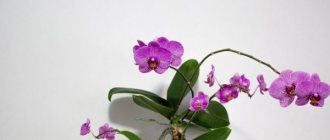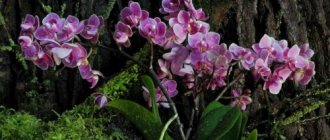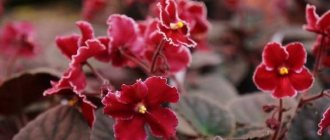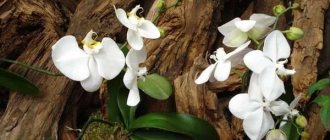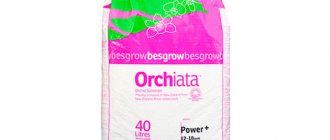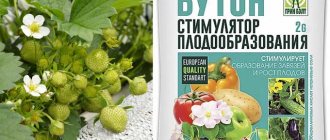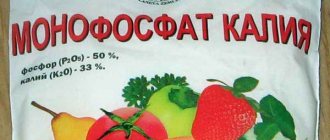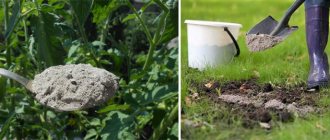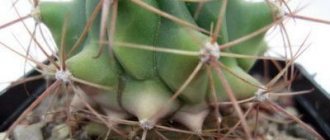Any indoor plant requires proper care. When choosing top dressing, it is important to pay attention to the condition of the soil, the characteristics of the plant and growing conditions.
Thanks to fertilizers containing nutrients, you can create optimal conditions for plant growth.
Fusco is a popular company that produces plant nutrition. Depending on the type of preparation, the composition and properties of the fertilizer change. The main components of any fertilizer are: nitrogen, potassium, manganese, potassium, cobalt, copper and zinc.
In professional terms, this is a specialized complex liquid fertilizer with microelements in chelated form. Fusco contains a balanced set of nutrients necessary for the active growth of all types of garden plants. And many gardeners use Fasco for indoor plants.
Composition and properties of Fasco
“Fasco” is not a type of fertilizer, but the name of a company that successfully produces plant fertilizers. For this reason, the composition and properties may vary depending on the type of drug. However, most varieties of Fasco products are complex mineral fertilizers, which can contain more than 10 different components necessary at different stages of a plant’s life. The most popular universal fertilizer “Flower Happiness” contains:
- Nitrogen.
- Potassium.
- Phosphorus.
- Manganese.
- Seru.
- Iron.
- Cobalt.
- Molybdenum.
- Copper.
- Zinc.
- Bor.
A rich assortment of fertilizers and the presence of quality certificates for all of them makes Fasco products popular among domestic flower growers for 20 years. Complex fertilizers have a perfectly calibrated composition that suits both fastidious flowers and easy-to-care green pets equally well. The product penetrates the soil as quickly as possible, increases the immunity and decorative properties of plants.
Its properties also depend on the composition of the chosen drug. Some saturate the soil with nitrogen, which is necessary for growing green mass, others help speed up the budding period and extend the flowering period.
Fertilizers from "Fasco" make caring for pets as simple and easy as possible, even for a novice gardener. They not only strengthen the root system of the plant, but also extend the flowering period, which means they allow you to enjoy the results of your work for the longest possible period of time.
When choosing fertilizer, it is important to focus on the composition of the soil.
Reviews from flower growers
Adding certain types of fertilizers to the soil is a mandatory procedure and part of caring for virtually all varieties of indoor plants.
It should be taken into account that indoor plants, unlike garden crops, have a very limited feeding area, so fertilization should be done quite often. In most cases, fertilizing is carried out during the following periods:
- Starting from March and ending in mid-October, flowers should be fertilized at least once every 2 weeks. However, the procedure is contraindicated if a transplant is scheduled for the spring.
- In late autumn and winter, virtually all plants are at rest and the application of any kind of fertilizer is contraindicated for them. This is due to the lack of natural sunlight, which leads to poor absorption of many substances that are absorbed by the root system.
- Violets and poinsettias are exceptional plants because their active growth does not stop even in winter. For this reason, their feeding, if necessary, can be carried out at absolutely any period. However, it is still recommended to reduce the frequency of fertilization as much as possible; the procedure should be carried out no more than once every 4–6 weeks, while fertilizing throughout November and December will need to be abandoned.
We invite you to familiarize yourself with the Swamp cranberry: features of the plant, when is the best time to collect
Signs that indicate that the plant lacks nutrients:
- Slow growth and lack of full development.
- Noticeable elongation of the stems with their rather weak structure.
- Fading or yellowing of foliage, reduction in its size.
- Lack of flowering.
- Frequent exposure to various diseases.
- Dropping of foliage or the appearance of unhealthy pigmentation on it.
- Nitrogen is one of the most important elements for plants, since it is part of most protein compounds. Without it, the formation of the cellular structure, and, consequently, the growth of the flower and the maintenance of vital processes is impossible. This element is an important participant in the process of chlorophyll formation; without it, a number of oxidative processes and the functioning of the respiratory system are impossible.
- Phosphorus is comparable in importance to nitrogen, and performs similar functions, but is part of much more complex proteins and nucleic acids. Without its participation, metabolic processes cannot take place, and it is also necessary for the absorption of a number of other important elements, including magnesium, nitrogen and potassium.
- Potassium is an inorganic substance, but without it the process of swelling of substances in plant cells, as well as the natural formation of carbohydrates and proteins, is impossible. In addition, it increases the level of frost resistance and resistance to various infectious and viral diseases to which indoor plants may be susceptible.
- Calcium is the main nutritional element that is necessary for the comprehensive strengthening of cellular structure, natural plant growth, as well as for maintaining phosphorus and nitrogen metabolism.
- Magnesium is the main material for the formation of chlorophyll, and also takes an active part in the process of photosynthesis and the formation of many enzymes necessary for the plant.
- Sulfur is used by plants to ensure protein metabolism, as well as in the process of regeneration of all damaged structures.
- Iron - occupies an intermediate niche between microelements and macroelements, just like chlorine, it takes part in many processes that are significant for indoor plants.
- Chlorine is a microelement, since the level of consumption by plants is insignificant, but at the same time it has a tremendous impact on many life processes.
We invite you to familiarize yourself with Fitosporin for indoor flowers
All other chemical elements are also very important for plants, but they are consumed in minimal quantities.
- Liquid fertilizers are most often used to feed indoor plants, since it provides the fastest feeding of the root system. All necessary elements are presented in the form of a homogeneous mass with a high level of concentration, so in most cases, preliminary dilution with water is required. There are liquid mixtures of organic and mineral types.
- Soluble fertilizers are a powder mixture; the concentration of nutrients in them is also very high, so they require dilution in clean water. Most options are sold in sachets, which are designed for dilution in a liter of liquid.
- Fertilizers available in the form of candles, tablets or any other solid. Usually they are buried in the substrate near the wall of the container in which the plant is grown; the dissolution process occurs gradually during each watering. Such drugs have a long shelf life, since one tablet or suppository usually lasts for several months at once. The only disadvantage of this form is the difficulty of extraction from the ground if necessary and the uneven distribution of nutrients in the soil.
- Fertilizers in granular form for indoor plants are used in rare cases, since most often they are intended exclusively for crops growing in open ground. Typically, they are introduced into the soil only once a year by scattering them in an even layer; the nutrients are absorbed into the soil during watering.
- Foliar fertilizers are in liquid form, but are not intended for application into the soil, but for spraying the outer parts of the plant from a spray bottle. Absorption occurs through stomata located on the foliage, and the processing of all active substances occurs during the process of photosynthesis.
When is the use of flowering stimulating fertilizer indicated?
Flowers growing at home, as a rule, require much more attention than garden plants. This is due not only to their whimsicality, but also to environmental conditions. Limited space, low nutrient content in the soil, lack of light and air are factors that negatively affect the health of any plant. And high-quality fertilizers help to minimize such environmental consequences. It is especially important to feed plants that are capable of flowering. If the elements initially present in the soil are sufficient to grow green mass, then by the time the buds are planted the soil is depleted, which means the pet is experiencing a deficiency of microelements.
"Fasco" produces fertilizers, the main purpose of which is to stimulate flowering. Most of them are produced in liquid form and can be used as a liquid for both irrigation and spraying. This form is better absorbed by plants, which means the drug begins to act faster.
It is better to feed the flower with a stimulant in the morning, when the sun does not shine too aggressively.
It is recommended to apply fertilizer for the first time no earlier than 10-14 days after transplanting into new soil. It is preferable to alternate the flowering stimulator with classic mineral fertilizers. The latter is also added once every 2 weeks. This scheme must be followed during the period of active growth and flowering of the pet. The rest of the time, plants do not need a stimulant, and they only need microelements contained in complex fertilizers, usually applied once every 30 days.
It is recommended to use the solution in the morning or evening hours
Spathiphyllum
From March to September (during the period of active growth), the plant should be regularly fed; for spathiphyllum, the fertilizer is prepared in a not very high concentration (1-1.5 g per 1 liter of water).
You can use fertilizers for indoor plants that do not contain lime to feed spathiphyllum: Flower, Azalea.
Among organic fertilizers, the use of rotted cow manure is quite effective (1:15; 1:20). In this case, it is necessary to water the plant abundantly before and after fertilizing.
Description
Using BIO soil for house plants will create a habitat that is close to natural.
Application
When planting (transplanting) flower and ornamental potted plants. It is recommended to put drainage at the bottom of the pot (in a layer 1/4-1/5 of the height of the pot), add soil, lightly compact it, plant the plants, add soil, leaving free space for watering, at least 1.5-2 cm from the top edge of the pot and water generously. For the first 7-10 days, it is recommended to protect plants from direct sunlight. Further care is generally accepted. You can start feeding plants no earlier than after 1.5-2 months.
Advantages
- Provides long-lasting flowering
- Color fastness of leaves and flowers
- Allows plants to easily survive short daylight hours
- Increases immunity to diseases
Compound
High-moor peat, low-lying peat, sand, limestone (dolomite) flour, expanded clay drainage, vermicompost, complex mineral fertilizer with microelements Substratdünger.
Packing
5, 10 l
Pros and cons of Fusco
The first positive quality of the drug is its form. Fasco is a flowering stimulating substance that is produced in 90% of cases in liquid form (concentrate).
To ensure accurate dilution of the substance, the fertilizer packaging is equipped with instructions for use, which indicate the dosage for each plant, taking into account its characteristics. As a rule, the liquid form of drugs is easier, faster and easier to absorb by the root system.
The application is convenient for the gardener. Fusco already contains the necessary microelements that are suitable for 85% of decorative home and garden flowers. After purchasing, all that remains is to dilute it and choose the method of application. After all, Fusco is allowed to be applied not only as a root option.
Direct spraying is also recommended (using a spray bottle). The pollination method is better accepted by plants, since under stress they quickly receive life-giving moisture throughout the green part.
The advantage is economical consumption and reasonable price. For an average indoor flower garden, one bottle per season is enough.
Disadvantages include great variability. Since Fusco is one drug with a wide variety of types.
Need to know! The shelf life of Fusco reaches 5 years with the right approach and compliance with the rules. It is strictly forbidden to use all types of the drug if the expiration date has expired or the granules are damp. In this form, the fertilizer gives the opposite reaction - it kills the plant.
General information about universal fertilizers
Flowers in “pots” differ from wild ones in that their life activity takes place in a limited space. Therefore, it is necessary to constantly replenish the “reserves” of nutrients in this kind of artificial environment, because if they run out, the living organism will have nowhere to get them from and this will inevitably lead to its death. Under natural conditions, Mother Nature herself takes care of supplying plants with the necessary microelements; in the case of home flowers, humans take on this function. Periodic feeding of indoor plants with various fertilizers ensures healthy growth and harmonious development.
One of the most convenient and effective ways to care for the permanent inhabitants of the windowsill is to fertilize with universal fertilizers, which are sold ready-made in stores. They contain a large amount of valuable substances necessary for the plant at all stages of development. The only thing that is required of you is to regularly fertilize the soil in the pot with it.
The complex of useful substances contained in such products have a structure that is most convenient for assimilation by crops. Homemade fertilizers have one significant flaw - you never know what specific substance the plant needs at the moment, so you have to act almost at random. In universal supplements, on the contrary, all the necessary microelements are collected in optimal proportions, so as to compensate for the deficiency of certain substances and prevent oversaturation.
The main advantages of industrial fertilizers over fertilizers made at home:
- Convenient release form. Such solutions are available in the form of liquid concentrates. They are very easy to use. They must be diluted in water, following the instructions and taking into account the characteristics of a particular plant. The root system absorbs ready-made liquid fertilizers much better than dry mineral mixtures.
- Comfortable use. There is no need to buy several different fertilizers and manually prepare a nutrient mixture. It is enough to buy a universal fertilizer and prepare it according to the recommended dosage.
- They have an optimal balance of useful elements. Universal fertilizers are designed to meet the needs common to all domestic crops. Of course, if you buy a fertilizer designed for a specific type of plant, its composition will be adapted to the needs of that particular crop.
- Can be used not only by the root method, but also by direct spraying. This is very positive for indoor plants, which have a hard time not only with a deficiency of nutrients, but also with their excess. By fertilizing a flower by spraying, you will protect it from the destructive oversaturation of active elements.
- Economical consumption of the product and affordable price of the product. One bottle of such a preparation is usually enough for one season, provided that the solution will be regularly used to feed several household crops.
Types of Fusco and their features
There are many different types of fertilizers from the Fasco brand. They are divided according to their qualitative composition, form of implementation and purpose. Some are used strictly for indoor flowers, others for vegetable crops. The former are also divided according to the form of release. So, there are liquid and dry preparations. "Fasco" can be found in the form of tablets, capsules and even sticks that you can dilute yourself. Many gardeners choose ready-made liquid fertilizers, which are more convenient to use.
In total, there are about 200 different preparations from “Fasco” that help to grow beautiful and healthy plants without effort. Each gardener independently chooses the type of feeding, depending on his preferences and the type of pet he is raising. Thus, fans of orchids and other especially whimsical flowers opt for specialized fertilizers for a specific flower. Others prefer universal means.
Instructions for use of Fasco
Each package of the drug contains detailed instructions for use, which should be strictly followed.
How to dilute and the best time for processing
Most of the fertilizers from "Fasco" are sold in the form of a concentrated nutrient solution, which must be diluted in water immediately before use. The ratio of fertilizer to water depends on the type of flower crop being grown.
The manufacturer's recommendations, which indicate the correct proportions for specific types of plants, as well as advice on when it is best to add nutrient liquid, will help you avoid making mistakes.
The classic proportion for watering at the roots is 10 ml (1 bottle cap) per 1 liter of water. For spraying, you should use a less concentrated solution, which is prepared from 10 ml of product and 2 liters of water. The working solution is diluted in a separate container, which will not be used in the future for domestic purposes.
It is recommended to use the solution in the morning or evening. This will protect the plant from burns, which may occur if sunlight hits drops of nutrient liquid.
Watering at the root
In this regard, using the working solution is as easy as possible. It is enough to water the plant with it so that the entire lump of soil is moistened. But it is better to avoid getting the mixture on the ground part of plants due to its increased concentration.
Foliar feeding
“Fasco” is also used for foliar feeding of green pets. To do this, pour the solution into a spray bottle and generously spray the flower with the mixture.
Important! After spraying, a whitish coating may appear on the leaves of the plant, which can be easily removed with a damp cloth.
Security measures
"Fasco" is a fairly safe fertilizer, but when using it you should not ignore basic safety measures. Before diluting the product, you must wear gloves and protect other areas of the skin and mucous membranes from accidental contact with the solution. If it was not possible to avoid trouble, it is important to immediately rinse off the working mixture under running water. Do not smoke, drink or eat food while working with chemicals.
It is better to feed the flower with a stimulant in the morning
Precautionary measures
Before preparing the solution, carefully read the instructions, they contain safety requirements:
- When storing the drug, avoid impacts and falls so as not to damage the integrity of the packaging.
- Use a separate container to prepare the product.
- Strictly maintain the concentration of the solution, do not exceed it. Use a measuring cap.
- Wear protective gloves.
- When finished, wash your hands, face and exposed areas of the body with soap and rinse thoroughly.
- Keep the bottle of fertilizer out of the reach of children and pets.
- Do not use empty containers to store other liquids.
Many users note the unpleasant odor of Fusco, so feed the plants in a well-ventilated area.
Fasco – products for the care of garden and indoor crops. The company's goal is to create highly effective and high-quality drugs intended for various groups of the population.
Not in stock
Check at WAREHOUSE 1 (Minsk, Central district) Check at WAREHOUSE 2 (Minsk, Sovetsky district) Check at WAREHOUSE 3 (Minsk, Pervomaisky district) Check at WAREHOUSE 4 (Minsk, Partizansky district) Check at WAREHOUSE 5 (Minsk, Zavodskoy district) Check at WAREHOUSE 6 (Minsk, Leninsky district) Check at WAREHOUSE 7 (Minsk, Oktyabrsky district) Check at WAREHOUSE 8 (Minsk, Moskovsky district) Check at WAREHOUSE 9 (Minsk, Frunzensky district)
You will find similar products in the categories: Liquid fertilizers, stimulants, fertilizing Delivery in Minsk and the Republic of Belarus: from 5 rubles for the entire order
Pickup: Minsk. , st. Kovaleva 23a (map)
Rating: 4.5 based on 11 votes.
The video has been deleted.
| Video (click to play). |
Sources:
- Garnizonenko T. S. Catalog of beautiful flowering and ornamental plants; Phoenix - Moscow, 2005. - 336 p.
- Gams Eduard Sergeevich Modern Trends in the Development of Research in the Field of Creation of New Generation Herbicides and Genetic Plant Protection (Review of Foreign Literature) / Agricultural Biology. Series “Plant Biology”, 1995, No. 1, Page. 12 - 18.; AST, AST Moscow, Agata - Moscow, 2012. - 616 p.
- Garlov, P. E. Artificial reproduction of fish. Reproduction management. Textbook: monograph. / P.E. Garlov, Yu.K. Kuznetsov, K.E. Fedorov. - M.: Lan, 2014. - 260 p.
Fertilizer for indoor flowers Fasco how to dilute
Grade
5
voters:
1
I welcome you to our portal. I'm Maria Nazarova. Currently, I have been working in the field of flower sales for more than 5 years. I believe that I am a specialist in this area, I want to teach all site visitors to solve various problems. All materials for the site have been collected and carefully processed in order to convey all the required information as accessible as possible. However, in order to apply everything described on the site, consultation with specialists is always necessary.
The importance of fertilizers for indoor plants
The value of the nutritional components of fertilizers for crops is difficult to overestimate. The essential elements for life present in fresh soil quickly run out. They can be replenished using universal fertilizers that include all the necessary components.
It should be noted that oversaturation of the soil with fertilizers negatively affects the growth and development of flowers, so before you start fertilizing, you should make sure that it is necessary, and also carefully study the instructions for diluting the chemicals to achieve the optimal concentration.
Typically, adding nutrients to the diet of different types of plants begins in the spring and ends in the fall, but for some crops that bloom in winter, the timing of fertilizing varies.
Description of the product
Fasco is used for root and foliar feeding of all subspecies of orchids.
The product is complex and designed taking into account the needs of tropical flowers. It is diluted in water for irrigation or spraying.
Properties
Fasco is used to raise the tone of the plant and relieve stress from it. With long-term use of fertilizer, flower growers note:
- Increased flowering time.
- The appearance of more buds on the peduncle.
- Preservation of orchid resistance against parasites and diseases.
- Faster adaptation when environmental conditions change.
- Acceleration of plant growth and development thanks to the chelated form of useful substances in the composition.
- Strengthening the root system.
- The appearance of additional flower stalks.
Analogues of the drug
If it is not possible to purchase Fasco for orchids, then there are several analogues of the product on the market. Information about them is presented in the table below.
| Name | Release form | Peculiarities | Price |
| EffectBIO | Spray | Valid for 2 years, not dangerous for animals and humans, requires at least 3 fertilizers to produce an effect. | From 160 rub. |
| Bona Forte | Liquid, spray | Large selection of volumes, works similarly to FASCO. | From 140 rub. |
| Crystalon | Liquid | Large selection of volumes, | From 115 RUR |
| FlorGumate from Hera | Liquid | A cheap product, it is necessary to reduce the concentration of fertilizer by half, the effect appears after 3-4 fertilizing. | From 80 rub. |
Flower growers do not recommend using these drugs together with Fusco, since the content of useful substances will be too high. This can lead to poisoning and wilting of the plant, as well as burns to the root system.
